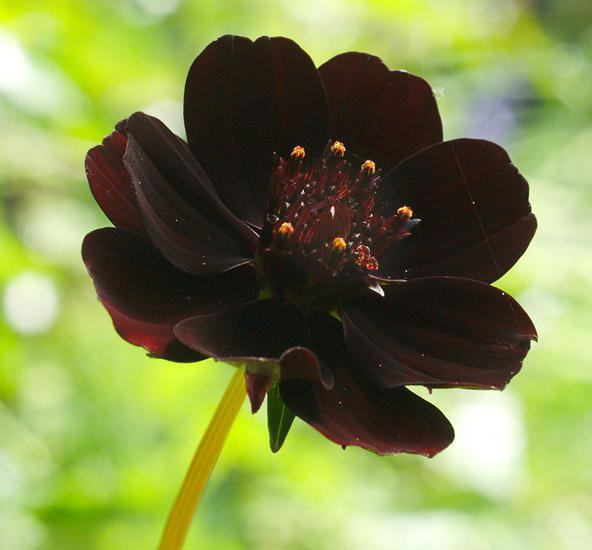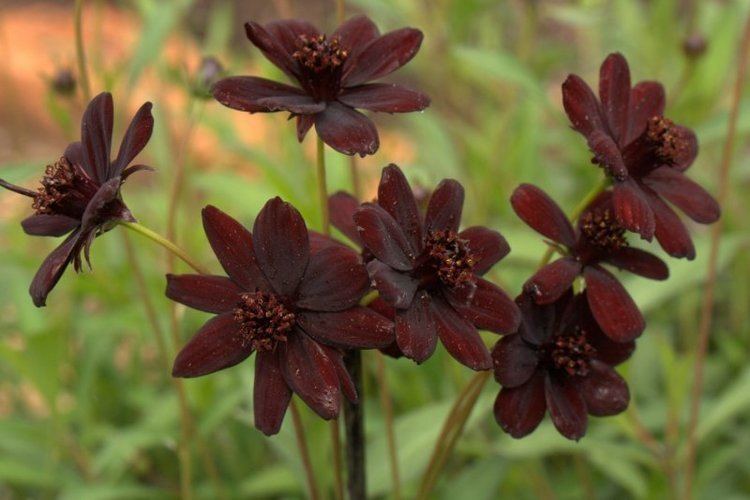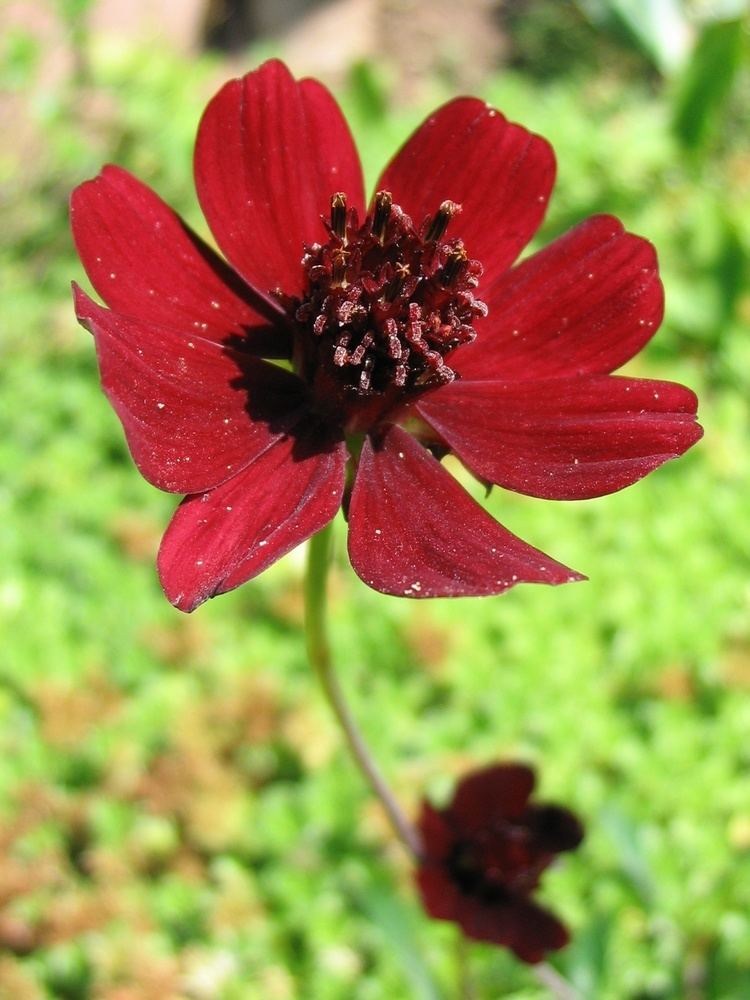Tribe Heliantheae Rank Species | Higher classification Cosmos | |
 | ||
Similar Cosmos, Berlandiera lyrata, Daisy family, Cosmos sulphureus, Cosmos bipinnatus | ||
Plant pick chocolate cosmos
Cosmos atrosanguineus, the chocolate cosmos, is a species of Cosmos, native to Mexico, where it is extinct in the wild. The species was introduced into cultivation in 1902, where it survives as a single clone reproduced by vegetative propagation.
Contents
- Plant pick chocolate cosmos
- Toiletspoon cosmos cosmos atrosanguineus 15 19 old tape3
- Cultivation and uses
- References

Cosmos atrosanguineus is a herbaceous perennial plant growing to 40–60 cm tall, with a fleshy tuberous root. The leaves are 7–15 cm long, pinnate, with leaflets 2–5 cm long. The flowers are produced in a capitulum 3-4.5 cm diameter, dark red to maroon-dark brown, with a ring of six to ten (usually eight) broad ray florets and a center of disc florets; they have a light vanillin fragrance (like many chocolates), which becomes more noticeable as the summer day wears on.

Toiletspoon cosmos cosmos atrosanguineus 15 19 old tape3
Cultivation and uses

The single surviving clone is a popular ornamental plant, grown for its rich dark red-brown flowers. It is not self-fertile, so no viable seeds are produced, and the plant has to be propagated by division of the tubers, or by tissue culture.

It requires partial sun or full sun, and flowers from mid to late summer. It is frost-sensitive (Zones 6-11); in temperate zones, the tuber has to be dug up and stored in a frost-free store over the winter.
